Introduction: The residents of Khirbet Ghazaleh, al-Kutaybah and Naamer towns located in Daraa countryside are still displaced outside their towns for the fifth consecutive year. Since seizure of those towns in 2013, the Syrian regular forces have prevented tens of thousands of civilians from returning to their homes and towns despite the multiple attempts. The Syrian regular forces emptied these villages from their residents and turned them into fully positioned military barracks, making the majority of the population either internally displaced in armed opposition-controlled areas in the eastern countryside of Daraa, or migrants out of the country to be refugees in refugee camps, the field researcher of Syrians for Truth and Justice/STJ stated.
According to many testimonies obtained by STJ, most of the residents of these towns displaced following a fierce military campaign carried out by the Syrian regular forces on their areas in mid-March 2013. The regime used artillery and aerial bombardment to break into those towns and extract them from the armed opposition[1]. This campaign caused many civilian casualties, in addition to the numerous practices committed by the Syrian regular forces against the civilians being looting or vandalizing their property.
First: The Strategic Importance of Khirbet Ghazaleh, al-Kutaybah, Naamer Towns
The three towns of Khirbet Ghazaleh, al-Kutaybah and Naamer have a strategic location given they are adjacent to the international road (Damascus-Amman), and are considered to be the area that separate between the Syrian regular forces and the armed Syrian opposition factions in the eastern section of Daraa province. Khirbet Ghazaleh is the largest of these towns, with a population of 20,500 people.
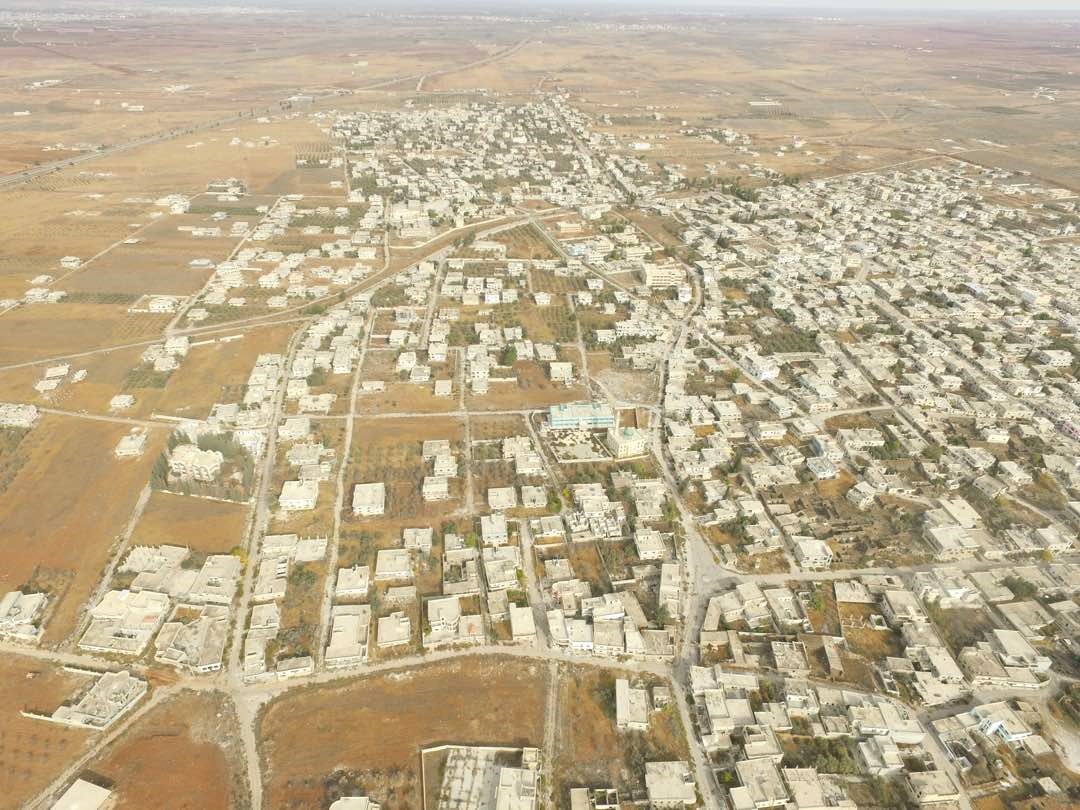
An overview showing the town of Khirbet Ghazaleh in Dara countryside, taken in 2017.
Photo credit: an activist from the city.
On the other hand, al-Kutaybah town is considered to be part of Khirbet Ghazaleh due to geographical and social overlap, but they are separated administratively. It has a population of about 4500 people, but after the Syrian regular forces controlled it in May 2013, 1,500 persons became internally displaced, mostly in armed opposition-held areas in Daraa countryside, whereas the rest migrated outside Syria. Naamer has a population of about 4,500, who have faced the same fate just like the residents of the two former towns.
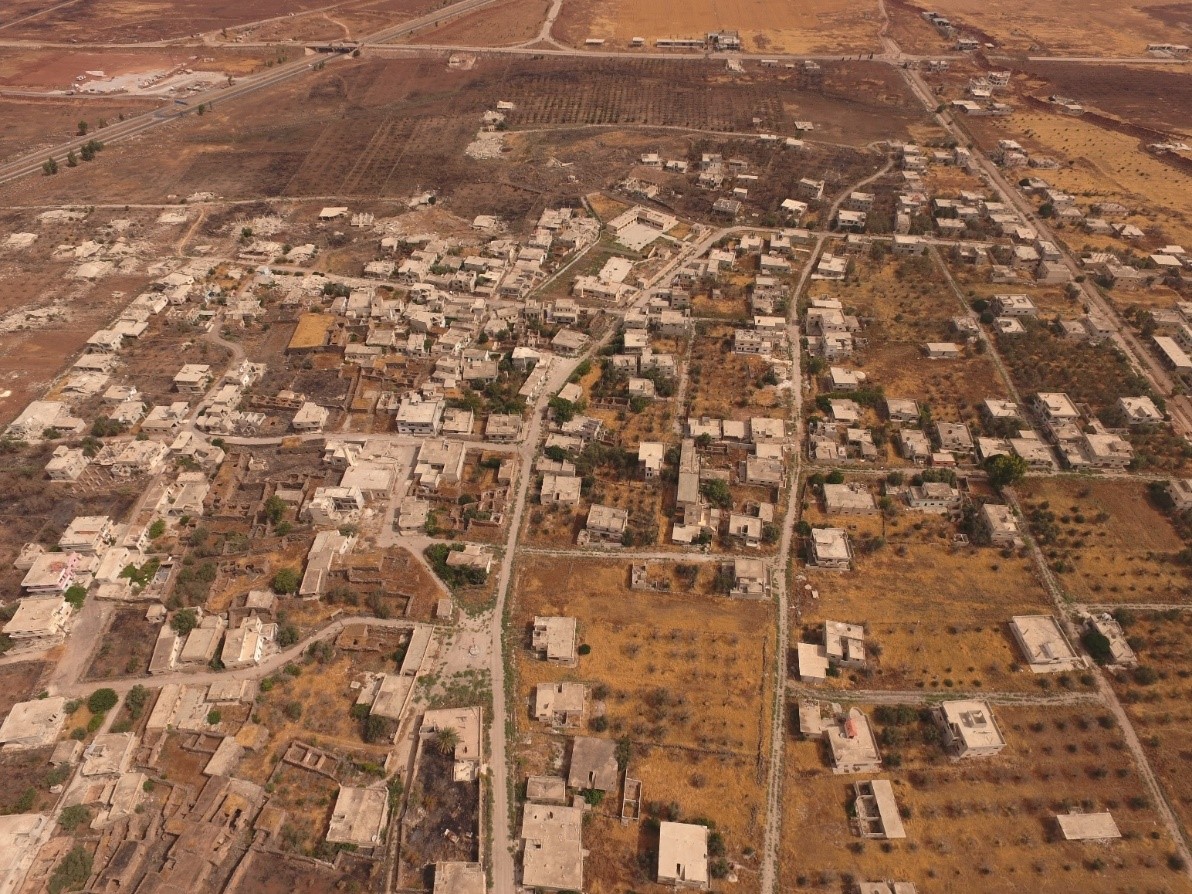
An overview of Naamer town in Daraa countryside, taken in 2017.
Photo credit: an activist from the city.
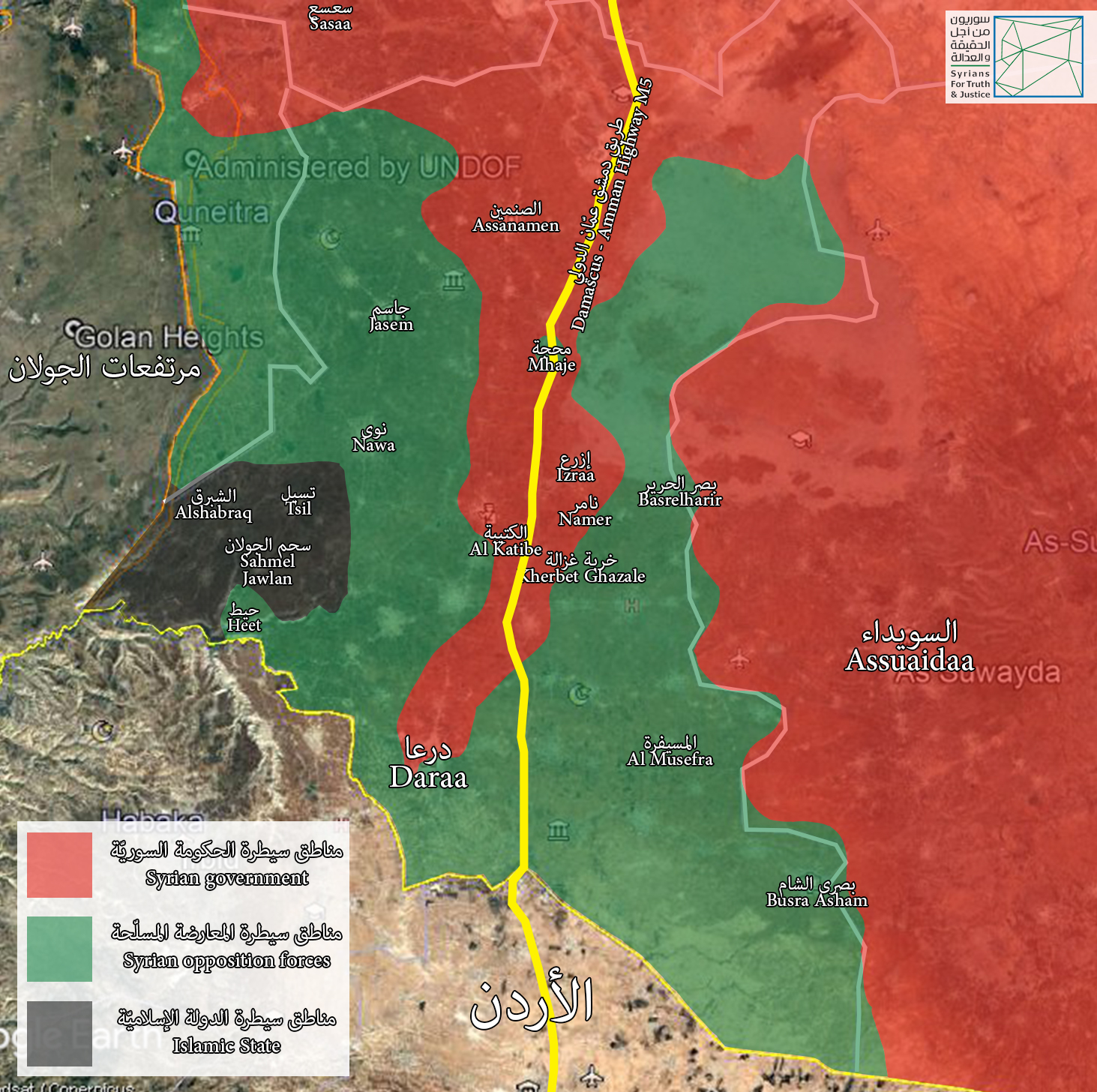
Satellite image showing the location of the three towns (Khirbet Ghazaleh, al-Kutaybah, and Naamer), in addition to the International road (Damascus-Amman) and the map of control until late March 2018.
Second: How the Syrian Regime Took Control of the Three Towns
On May 11, 2013, the Syrian regular forces were able to take control of both Khirbet Ghazaleh and al-Kutaybah in Daraa countryside, after breaking into and extracting it from the Syrian armed opposition factions. The storming was accompanied with a violent bombing campaign in which the Syrian regular forces used warplanes and artillery bombardment. Consequently, several civilians were killed, an extensive destruction affected to their property, and forced them to flee from both towns towards their neighboring towns such as Naamer, and some towns in eastern countryside of Daraa such as (Western Ghariyah and al-Karak). It must be noted that many people subsequently migrated out of the country, specifically to Jordan.
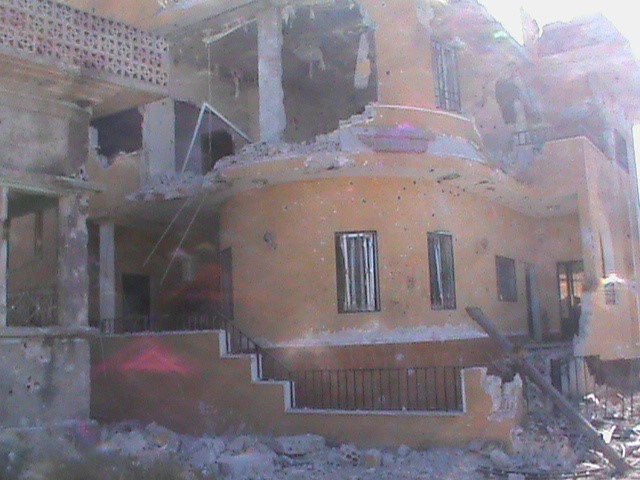
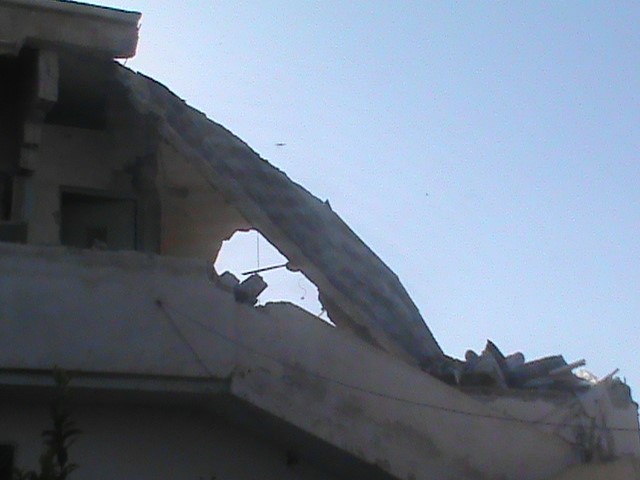
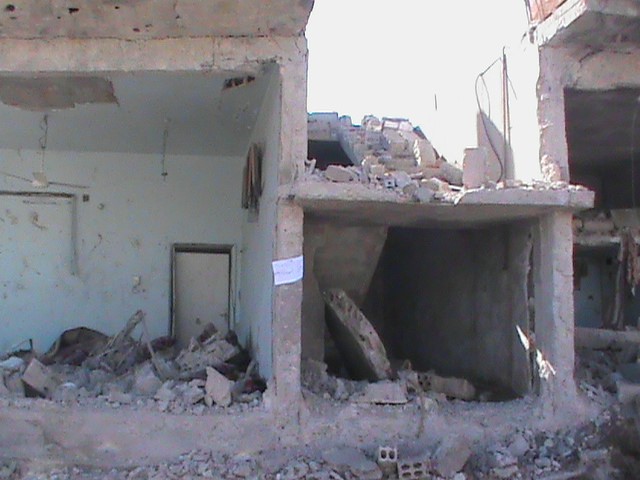
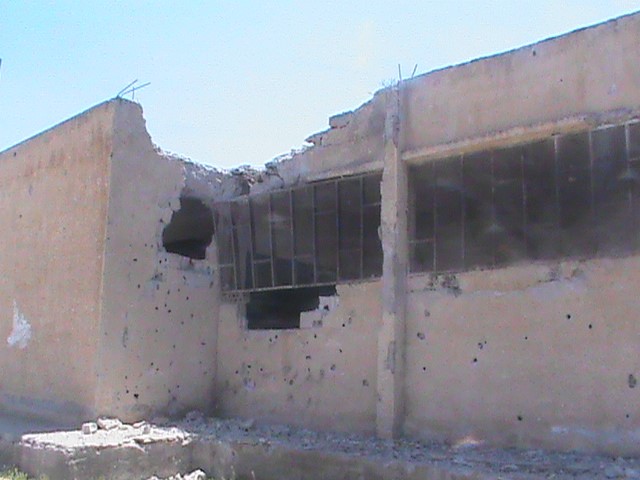
Images showing some of the devastation affected to al-Kutaybah town, following the violent bombardment carried out by the Syrian regular forces in May 2013.
Photo credit: Hussam al-Rashid, the media activist.
A video footage, published by Sham News Network, showed part of the destruction of civilian homes in Khirbet Ghazaleh, following the violent shelling during May 2013.
Furthermore, Naamer town, which was considered a safe haven for its neighbors, quickly turned also into a hot zone because of the violent bombardments it was subjected to by the Syrian regular forces in March 2013, during the attempt to take control it. Therefore, its population fled significantly, and on April 26, 2013, the Syrian regular forces stormed and fully controlled the town.
According to many testimonies obtained by STJ, the storming process was accompanied by summary executions. In Naamer Town (Issa al-Amari, Sobhi Mansour, and Jawdat Mansour) were executed, according to several locals’ testimony. in al-Kutaybah town, the young man identified as Rami Jamil al-Shabelaq was executed; his family told STJ, that news of him cut off from early May 2013, until they later learned that he had been summarily executed through a photograph showing his body posted by an officer of the Syrian regular forces on his own Facebook account.
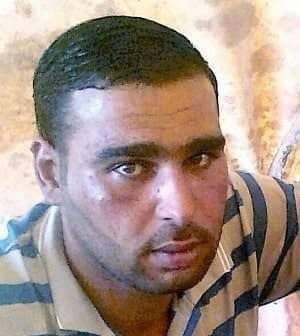
Image of the young man "Rami Jamil al-Shabelaq" just before he was killed in May 2013.
Photo credit: Family of the young man "Rami al-Shabelaq"
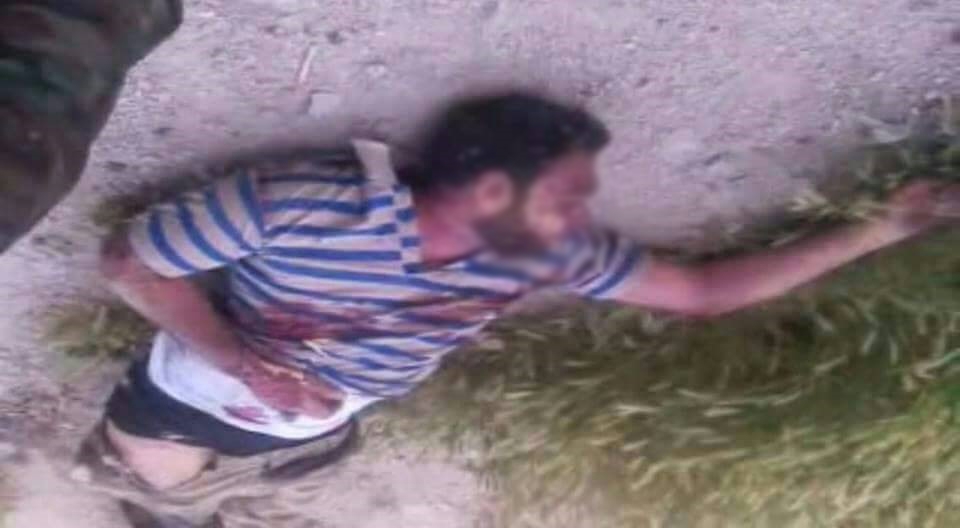
Image of the young man, "Rami Jamil al-Shabelaq", following his execution summarily by the Syrian regular forces.
Photo credit: Family of the young man, "Rami al-Shabelaq".
Third: Looting Public and Private Property and Destroying Homes
After the Syrian regular forces’ seizure of the towns Khirbet Ghazaleh, Naamer, and al-Kutaybah in 2013, they started a campaign of looting of civilian homes and public property like schools, banks and government buildings. STJ obtained many testimonies that said they were initially just individual actions committed by officers and military parts of the Syrian regular forces involved in the breaking in that were considered as "spoils of war". But after that, they evolved into the systematic operations; the towns were divided into sectors, and each single sector was controlled by a faction of the Syrian regular forces, and considered everything in this sector to be its own property to the extent that the faction was holding financial deals with the Popular Committees[2] affiliated to Syrian regular forces, present in the towns of Qarfa, Izraa, and Sweida city, in order to sell the houses for up to a million Syrian pounds. In this regard, Maher al-Shabelaq, who hails from al-Kutaybah, spoke STJ, and said:
"Following the takeover of al-Kutaybah town, the regime forces began a campaign of retaliation against all residents of the town by looting, burning and blowing up their houses. Being an engineer in Izraa, travelling every day on the international road, I watched some of soldiers of the regime's army selling on the road the houses’ furniture for the cheapest prices. Some people purchased their stuff from the soldiers. In addition, some Popular Committees that were present in Qarfa, were paying to the regime in order to buy homes with half a million Syrian pounds, and then they unloaded them completely, from the electrical wires in the walls to the floor tiles and everything. After that, they exported them to Damascus, the capital, and as-Suwayda province to be sold in the second-hand shops."
Ward al-Nabulsi, who hails from Naamer, told STJ that he learned through some people affiliated to Qarfa town that follows the Public Communities, that these responsible for the theft of civilians’ homes and property in the town of Naamer, are identified as Ghazwan Musleh al-Ghazali, Nidal Mahmoud al-Ghazali, and Ismail Ibrahim al-Ghazali. He noted that many residents of Naamer had been able to retrieve their cars and agricultural machinery by purchasing them from those people, at prices lower than their original ones.
For his turn, Faris. M, who hails from Khirbet Ghazaleh, said that he had once asked an element of the military checkpoint of the Syrian regular forces, installed at the entrance of Khirbet Ghazaleh, to take photos of his house for SYP 10,000; the element agreed, and two days later, Faris returned carrying the sum agreed on and gave to the element who in turn gave Faris photos of the house. Faris said that when he returned home, he was shocked to see that the element had filmed a sarcastic video of him along with his colleagues while burning his house in cold blood.
A video footage posted by the Media Office in Daraa province, showed parts of burning and destruction of civilian houses in Khirbet Ghazaleh by the Syrian regular forces, on May 15, 2013.
Fourth: For the Fifth Consecutive Year, Syrian Regime Deny People to Go Back Homes
Residents of the above mentioned towns attempted several times to return to their Syrian regular forces-controlled towns, by sending delegations to negotiate with them, and in this regard, Ahmad al-Amour, from Khirbet Ghazaleh, spoke to STJ:
"In April 2013, I fled the town to escape the shelling carried out by the regime, and moved between several villages in the eastern Daraa countryside. During that time, many people and I tried to return to the town, but the regime's forces always refused under flimsy pretexts. Therefore, the people were trying to negotiate with regime, and on an occasion, a delegation from the displaced towns interviewed the Major General "Rustum Ghazaleh", who was then head of the Syrian Intelligence Division. At the time, he promised to allow people to return to their towns only a few days after the negotiating session, but Brigadier General Wafiq Al-Nasser, head of Military Security Branch in as-Suwayda, prevented implementing the order. The residents did other numerous attempts, but in vain, until our town was a military barrack where forces of the regime deployed. We have been displaced so far."
Osama al-Ahmad, from Khirbet Ghazaleh, testified to STJ that Syrian regular forces are still to this day preventing people from returning to their town, where they fled from violent shelling. He spoke:
"First of all, we thought we would go back to our towns and homes shortly after the regime's control over them; we waited so long but vain. Then, the people attempted to negotiate with the regime and know why we were prevented from going back, in addition to knowing the terms, we had to apply, but prevarication of the negotiations on the part of the regime was quite clear. The regime deliberately set incapacitate terms, such as handing over the persons charged of belonging to the Free Syrian Army or those who politically opposed to the regime, in order to argue that people themselves were the ones who refuse those terms."
Kamal al-Amari, who hails from Naamer town, told STJ that he displaced from his hometown on April 26, 2013, and he has been out of town since then because the Syrian regular forces denied the people to return. He noted that they have also prevented residents from entering the town to fetch their belongings or furniture late 2013.
Muhannad al-Haj Ali, an activist in Dara countryside, also reported that townspeople went on a sit-in on the international road Damascus-Amman, to demand a return to their homes and towns. The sit-in had begun in two stages, the first on September 5, 2017, and the second stage on September 24, 2017. He added:
“Following the first stage of the sit-in, the Syrian regime sent an unofficial message to the dignitaries of Khirbet Ghazaleh in order to hold a meeting with the people on demands to be agreed. Despite the people's distrust of the regime, they held a meeting attended by a wide group of locals from the displaced towns, and demanded to return the civilians to their homes, release all detainees, and departure of the regime's forces, except for checkpoints surrounding those towns. All that was to ensure that was to not allow anyone take our towns as headquarter to launch military actions against its forces. After agreeing to these demands, the regime returned to its vicious style and spread discord among the people by persuading certain supporters or biased persons that those terms were incapacitate and would not be accepted by the regime. Consequently, that created a big rift among the townspeople. Although some people accepted to return to their towns under the Syrian regime control, that was never allowed.”
Fifth: Suffering of the Displaced Townspeople
Residents of Khirbet Ghazaleh, al-Kutaybah, and Naamer towns have led difficult living conditions, notably under their continued displacement by the Syrian regular forces for almost five years. Mu'tasim al-Jarwan, president of the local council of Khirbet Ghazaleh confirmed this to STJ, and said:
"We have not succeeded in setting up camps for our displaced people, since the camps requires international support to cover its expenses. Furthermore, international care have not been provided, and several people went to villages and towns located in the eastern countryside of Daraa. Some people there received us in their homes, welcomed us, and helped us; whereas others closed doors, and we excuse them because our numbers were so great and our needs were greater, especially with the lack of resources in those areas, like water and flour. The treatment of humanitarian organizations had been very negative, on the pretext that we “had no land”, although we had formed a local council based on the system of lists and statistics in the diaspora that the people of those towns live in."
Mu'tasim al-Jarwan pointed out that many of the people who had migrated to villages and towns of the eastern countryside of Daraa suffered exploitation. For example, they were asked for a substantial amount of money to rent houses, let alone the great difficulties they were facing in order to have a job, which if they found, they were often exploited by the employer. He ended up saying that those towns of "Khirbet Ghazaleh, al-Kutaybah, and Naamer became completely empty of civilians and are only limited to the military presence of Syrian regular forces.
[1] Several Syrian armed opposition factions controlled these towns, such as Liwaa al-Yarmouk, Liwaa Falouja Horan, Liwaa of Unification of the Hawran, al-Mohajereen wal Ansar Brigade, the Deraa Horan Battalion, al-Watan Battalion and the Martyr Kamal al-Guthani battalion).
[2] Popular Committees are a group of young civilians, mostly who failed to perform compulsory service or the military reserve service in the Syrian regular Army. They have received training, weapons and financial support from Syrian regular forces in exchange for prevailing security control over some cities and towns such as Qarfa and as-Suwayda city, in cooperation with the forces of the Syrian regime.

